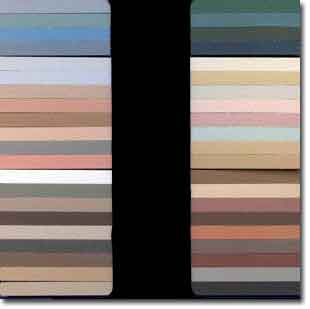Carpet and flooring store in Laurelville, Ohio
Custom Tile

- Floors
- Walls
- Showers
- Fireplaces
- Backsplashes
- Custom Shower Pans
- Heated Floors
- and more!!
Sizes, and selection, abound.
Ceramic tile is manufactured in sizes ranging from one inch to twenty-four inches square. So bring a tape measure when you go shopping.
During the firing process, ceramic tile will shrink, on average, by about 10% in size. For example a 12” by 12” floor tile will actually measure 11-7/8 inches square.
Tile size takes its cue from the room size.
When considering what size tile would be appropriate for your given space, start by determining the size of the room.
Often times, people think that small rooms call for small tile. That is not necessarily true. In fact, incorporating a larger size tile in a smaller room will visually increase the size of the space. And fewer grout lines will help create a cleaner surface appearance.
Conversely, using a tile size that’s too small creates more grout joints that may make the floor look too busy, again depending on the size of the space.
Ceramic can take on many disguises.
The look of natural stone is very popular but some consumers prefer ceramic over stone due to price and maintenance considerations.
In answer to consumers’ demands, ceramic and porcelain manufacturers have created tiles that offer textures, colors and patterns resembling natural stone products.
Of the sought after looks in ceramic and porcelain tile, slate, travertine and marble are just a few.
To further enhance the natural look, tile can also be made to feature heavy textures, chiseled and hammered edges, and even resemble tumbled stone.
Ceramic tile texture is related to its style. So feel free to feel! The feel of a tumbled stone or slate looking ceramic tile will be irregular and somewhat rough.
A tile simulating marble or granite on the other hand, will have a very smooth, polished feel. In addition to the feel, textures also vary in degree of shine, ranging from dull to semi-gloss to glass-like.

What you need to understand about grout.
Grout is a type of cement that is used to fill the space and provide support in tile joints.
There are two types of grout commonly used in home installations; Portland cement based, and epoxy based.
Both of these grout compounds may have sand added to provide additional strength to the tile joint.
Sanded grout is recommended for tile joints 1/8th of an inch and larger. Unsanded grout is typically used in joints that are smaller than 1/8th of an inch.
Grout can be pigmented to give a nearly infinite range of colors, shades and hues. Pigment is added to the cement at the job site when the grout is mixed.
Grout color and thickness will change the appearance of the floor and room dramatically.
Using a white or a light colored grout highlights the color in tile. Choosing a dark grout with a light tile, or light grout with a dark tile will emphasize the geometric pattern of your layout.